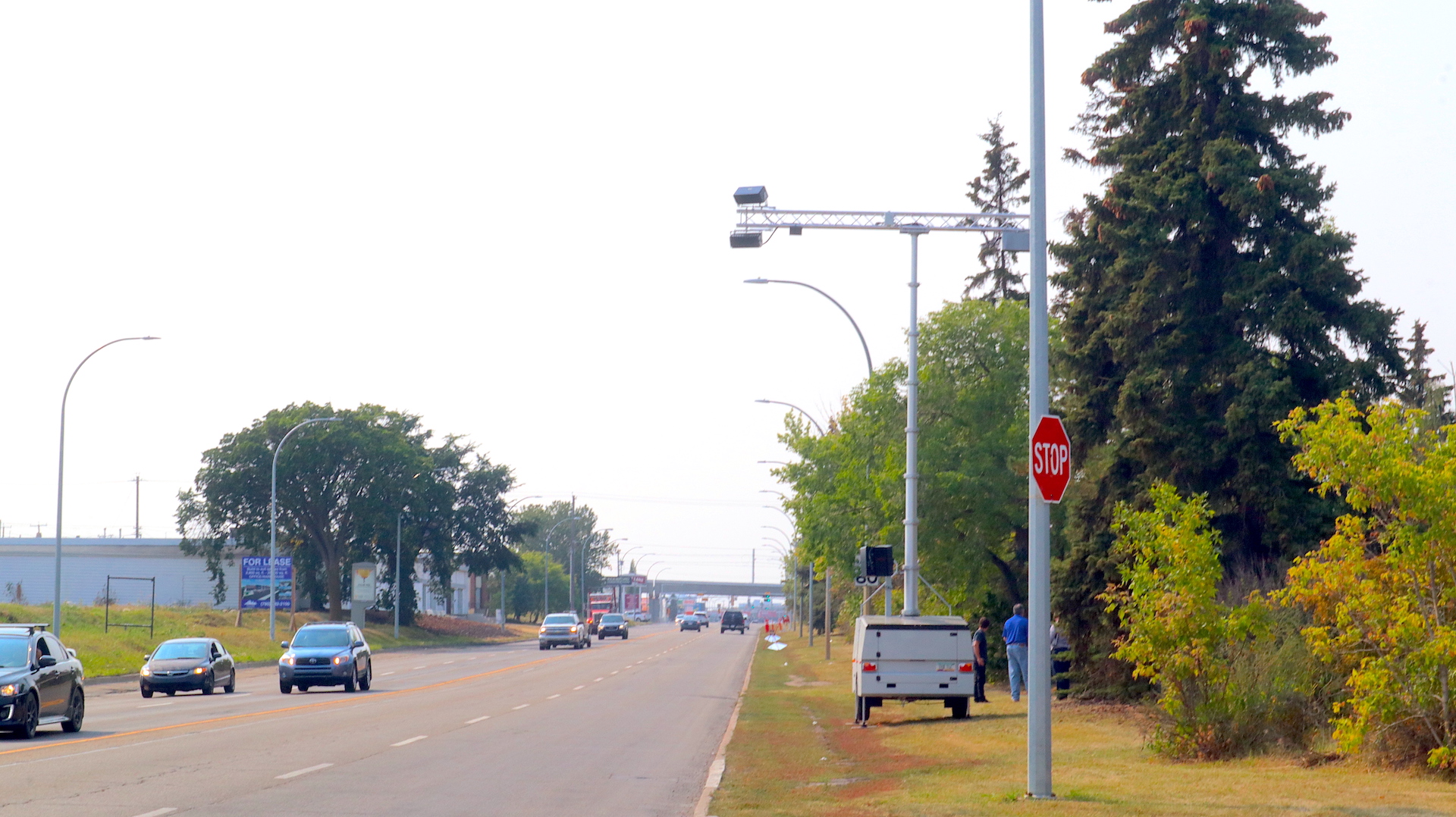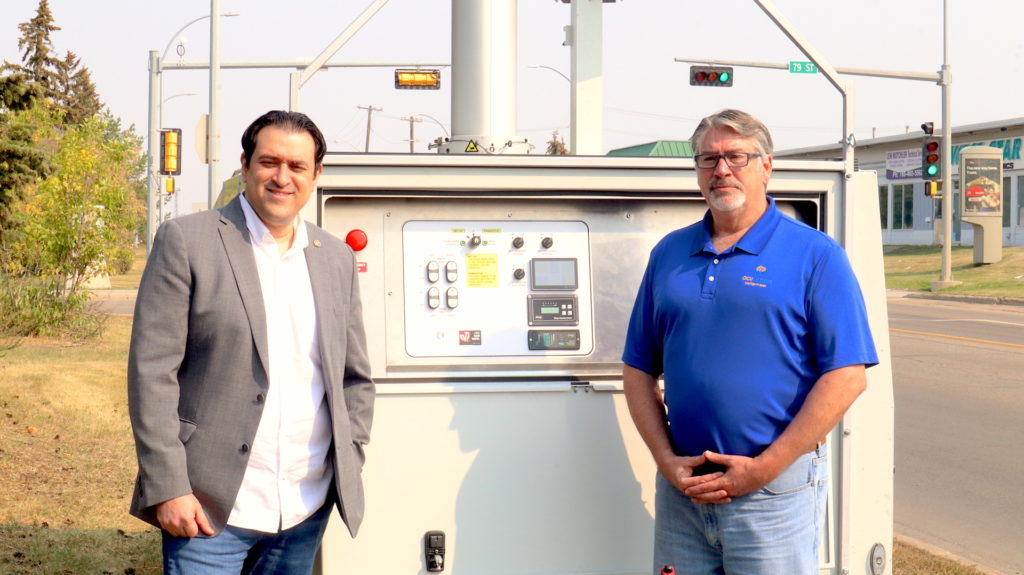 Lily Polenchuk
Lily PolenchukArtificial intelligence is currently being used in Edmonton to detect distracted driving as part of a research project.
On September 13, the University of Alberta launched this three-week research project to understand the prevalence of distracted drivers, specifically in Edmonton. Karim El-Basyouny, a professor in the faculty of engineering and urban traffic safety research chair at the University of Alberta, is the lead of the research team. The U of A research is in a collaboration with Acusensus, the City of Edmonton, and the Edmonton Police Service.
Since September 13, the technology has been stationed at its first location on the intersection of 79 Street and Argyll Road. According to El-Basyouny, it will be stationed there for about a week before moving to the next location, which is currently unknown. There will be a total of three different locations, one for each week during this project.
El-Basyouny’s research is being supported by a seed grant, making the use of Acusensus technology possible. Although the Edmonton Police Service is in collaboration with this project, the collection of data will be used solely for research, not traffic enforcement.
Edmonton is the first city in Canada to test Acusensus technology, according to Tony Parrino, the general manager for Acusensus in North America.
“The data around distracted driving in Canada has been a little patchy, [and] we don’t really understand how big of a problem it is … what we’re trying to do is see if there is a better way of understanding how big of an issue [distracted driving] is,” El-Basyouny explained.

Acusensus AI technology being used to gather data
The technology being used to determine the prevalence of distracted drivers is mainly AI. According to Parrino, the AI has gone through “a number of training scenarios with millions of data points.”
The system is radar-based with many different sensors, and four different cameras. Each camera captures something different; one captures a steep shot of the windshield, one camera is shallow in case of a phone-to-ear event, and the other two cameras are used for color context and capturing license plates. The information gathered is then given to the AI.
According to Parrino, although the AI has been trained to have maximum accuracy there is a possibility for false positives.
“It is very accurate, but there are false positives … 100 per cent of the images that are captured are reviewed by trained individuals [who determine if] the criteria is met for the U of A to determine that a distracted driving event has occurred, and only those are counted,” Parrino said.
The future use of this technology in Edmonton unknown
Although Acusensus technology is being used in Australia for traffic enforcement, according to Parrino, it is unknown if the technology will be used for traffic enforcement in Edmonton. As of right now, this research is being used solely to see the prevalence of distracted drivers in Edmonton.
“I think [traffic enforcement] is an option that is available to us at [some] point in the future, [however] it is not predominantly the purpose of this study,” El-Basyouny said.
In a statement sent out September 13, Jessica Lamarre, director of Safe Mobility for the City of Edmonton, commented on the U of A research project.
“This project provides an opportunity to gain a better understanding of the prevalence and safety impacts of distracted driving on our streets through the creative use of new technology alongside our talented research partners at the University of Alberta.”




